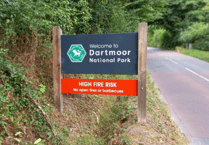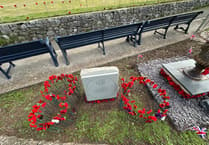THE UK’s largest and rarest beetle, once thought to be extinct, has been discovered in two separate locations on Dartmoor.
The discovery is thanks to the efforts of the conservation charity Buglife and its staff, volunteers, and local naturalists.
Working with local volunteers and naturalist John Walters, the project team spent many damp torchlit nights searching for the beetle.
The hard work and late nights have finally been rewarded with the addition of two new Blue Ground Beetle sites.
Up to 38mm in length, the Blue Ground Beetle is the UK’s largest ground beetle. Given its name as a result of the beautifully marked and strikingly blue-coloured wings, the Blue Ground Beetle makes its home in damp, deciduous, often ancient, woodlands of Oak and Beech.
The beetle was rediscovered in 1994 after being thought to have been extinct. It’s now known in just a handful of locations, where high-altitude woodland still exists.
Buglife’s Dartmoor Blue Ground Beetle project was established to survey Dartmoor woods; seeking undiscovered populations of the beetle.
Richard Knott, Dartmoor National Park Authority’s Ecologist, said: ‘Dartmoor is of national importance for the Blue Ground Beetle, Britain’s largest and rarest beetle, and the combination of ancient valley woodlands and humid climate create the perfect conditions for slugs, which adults and larvae feed on.
‘The discovery of these new sites is very exciting and indicates that Dartmoor habitats remain favourable for this rare and fascinating species.’
Both the adults and their larvae feed on slugs; upon finding their prey, the beetle will bite with its large jaws and inject digestive juices into the slug, eating it by sucking out its insides.





Comments
This article has no comments yet. Be the first to leave a comment.